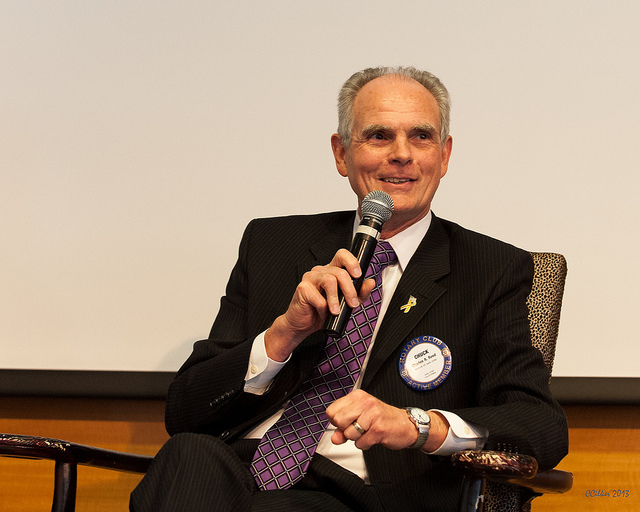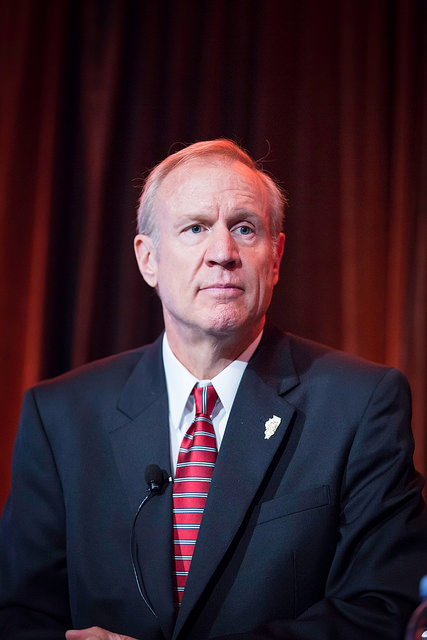
Reporter Ed Mendel covered the California Capitol in Sacramento for nearly three decades, most recently for the San Diego Union-Tribune. More stories are at Calpensions.com.
A bipartisan group announced the end last week of an attempt to put a public pension reform initiative on the California ballot this fall, aiming instead for the November 2018 ballot. Its refiled initiative also may be put into a bill in the state Legislature.
A bill that would cut the growing costs of state and local government pensions by reducing retirement benefits for new hires presumably would be dead on arrival.
Cuts in retirement benefits are opposed by powerful unions and their Democratic allies, unless agreed to in bargaining. Gov. Brown had the leverage of gaining public support for a tax increase to get legislation in 2012 that yields modest pension savings.
But for the reform group, a bill could result in a legislative hearing publicizing a proposed initiative, expose flaws or errors that need correction, and provide a minor campaign talking point: We tried to get the Legislature to do it.
And in theory, a hearing could provide a public service with a four-year checkup on the previous reform, a forum for local governments to report the impact of rising pension costs, and an updated debate on whether pensions are affordable or unsustainable.
Chuck Reed, a Democrat and former San Jose Jose mayor, said the group he leads with Carl DeMaio, a Republican and former San Diego councilman, is considering legislation for the proposed initiative they plan to file late this year.
“We have thought about that, and talked to some members of the Legislature about it, and we may,” Reed said last week. “That’s not off the possibility list.”
There is no guarantee that a bill containing the proposed initiative would get a legislative hearing. If the initiative is a state constitutional amendment, Reed said, the bill would go to the rules committee and may not get a hearing in a policy committee.
“That wouldn’t stop us from doing it,” Reed said. “So, it is something we are considering.”

The group has struggled with choosing a type of reform, getting an initiative title and summary from state attorney Kamala Harris they think won’t repel voters, and raising money needed to put an initiative on the ballot and counter an opposition campaign.
“We are skeptical that donors will have any confidence in these two failed politicians who have repeatedly bungled efforts to put their poorly-written efforts to gut retirement security for millions of Californians on the ballot,” Dave Low, spokesman for a union coalition, said in a news release last week.
“They can be assured that any scheme they cook up for 2018 will meet the same fate of their previous efforts because we will fight it with our full arsenal,” said Low.
Three years ago, Reed was joined by the mayors of four other cities (only one a Republican) in filing an initiative for a state constitutional amendment allowing what the watchdog Little Hoover Commission and others think is a key pension reform.
The pensions current state and local government workers have already earned through service on the job would be protected. But the pension amounts they earn in the future could be cut.
“The Legislature should give state and local governments the authority to alter the future, unaccrued retirement benefits for current public employees,” the Little Hoover Commission said in a 2011 report.
Private-sector pensions can make cuts in future pension earnings to control costs. But in California, decades of state court rulings are believed to mean the public pension offered on the date of hire can’t be cut, unless offset by a comparable new benefit.
As a result, most cost-cutting pension reforms are 1) limited increases in what employees pay for their pensions, mainly by eliminating employer pickups of the workers’ share, and 2) lower pensions and retiree health care benefits for new hires.
These reforms can take decades to yield significant cost savings, as employees with “vested” rights to the previous retirement benefits offered when they were hired are gradually replaced by workers with the new lower benefits.
San Jose voters approved a Reed-led measure in 2012 allowing the city to cut the future earnings of current workers. That part of a broader pension reform was blocked by a superior court, a ruling that will not be appealed under a city settlement with unions.
The similar statewide initiative filed by Reed and the mayors received a title and summary from Attorney General Harris Reed said was “inaccurate and misleading.” A court disagreed, declining to order a rewrite, and the initiative was dropped.
A poll conducted in 2013 for the union coalition found that “eliminating public employees’ vested benefits” is viewed “very unfavorable” by most voters and the word “eliminating” fosters a “visceral negative response,” the Sacramento Bee reported.
Pensions for new hires, not the vested rights of current workers, were the stated focus of an initiative filed last June by the coalition led by Reed and DeMaio, one of the leaders of a 2012 San Diego initiative giving new hires (except police) 401(k) plans instead of a pension.
But the title and summary issued by the attorney general, agreeing with unions that the initiative was being misrepresented, said it “eliminates” the “vested pension and retiree health care benefits” of current employees for work done in the future.
Last October, the coalition filed a simplified version of the initiative likely to give new hires a 401(k) plan, unless voters approve a pension, and a second initiative capping spending on retirement benefits at 11 percent of pay, 13 percent for police and firefighters.
The title and summary issued for the two initiatives by the attorney general in December said they affect new employees, with no mention of “eliminates” or the “vested rights” of current workers.
A poll circulated by the union coalition, done for Capital & Main by Binder in December, found 42 percent in support of the likely 401(k) plan and 40 percent in support of the spending cap.
Reed said the coalition’s own polling found higher support, the most for the cap, that is enough to win — but not without a well-funded campaign to counter the “full arsenal” of union opposition.
His rough estimate is that $3 million is needed to gather the voter signatures required to place a constitutional amendment on the ballot and $25 million for the campaign. Reed has raised money for San Jose pension measures in 2010 and 2012.
He thinks donors can be found among good-government fiscal advocates in high-tech, wealthy conservatives concerned about pension debt and tax increases, and Democrats who do not want pension costs to crowd out funding for government services.
A Reed-DeMaio statement last week said that after discussion with coalition members and key donors, the decision was made to “re-file at least one of our pension reform measures later this year for the November 2018 ballot.”
A better reform environment is expected then as “rising pension costs further squeeze” government budgets, they said, and a pending U.S. Supreme Court decision (Friedrichs v. California Teachers Association) may reduce union money available for an opposition campaign.










